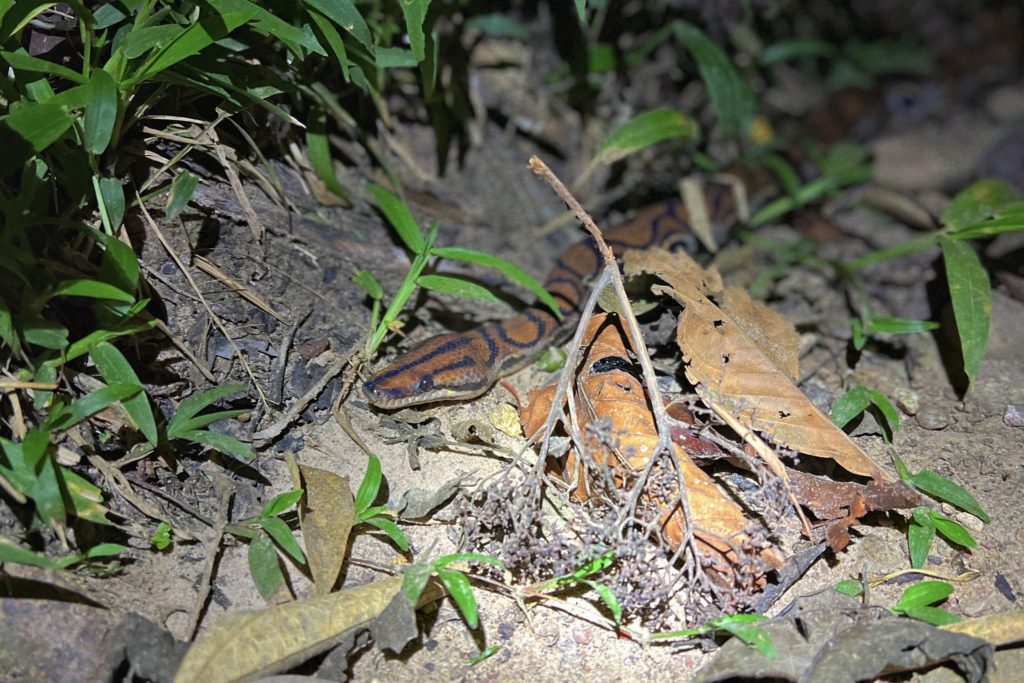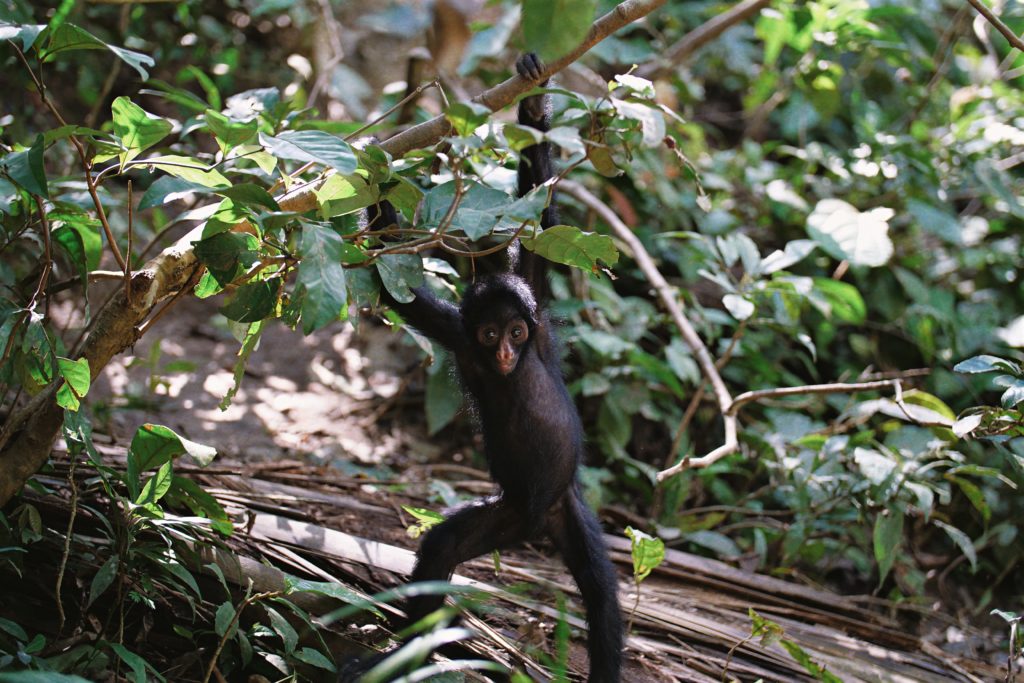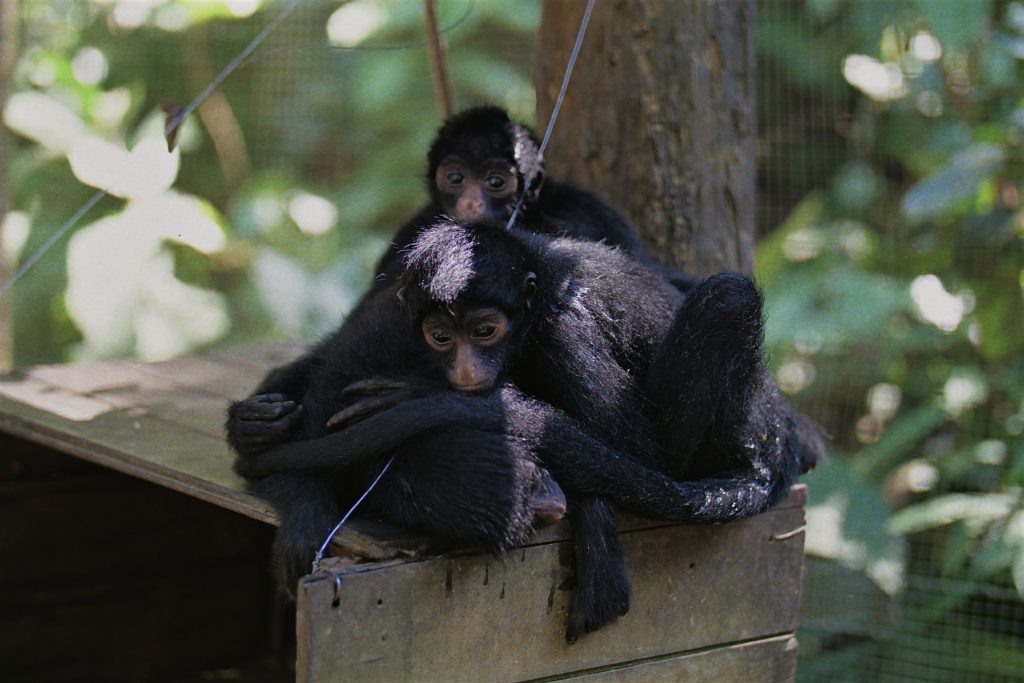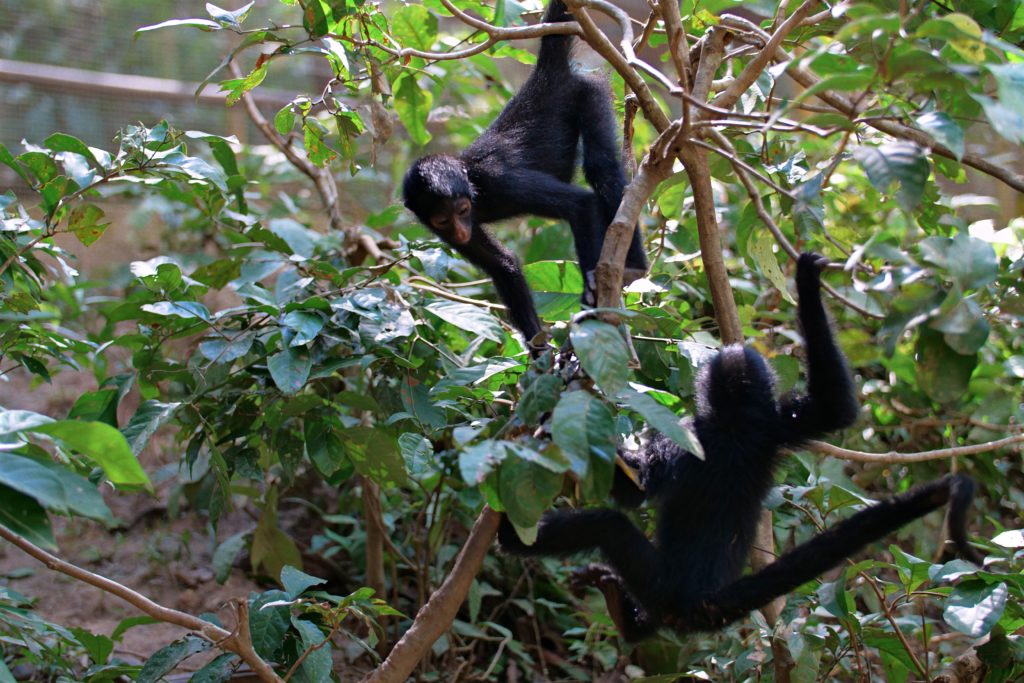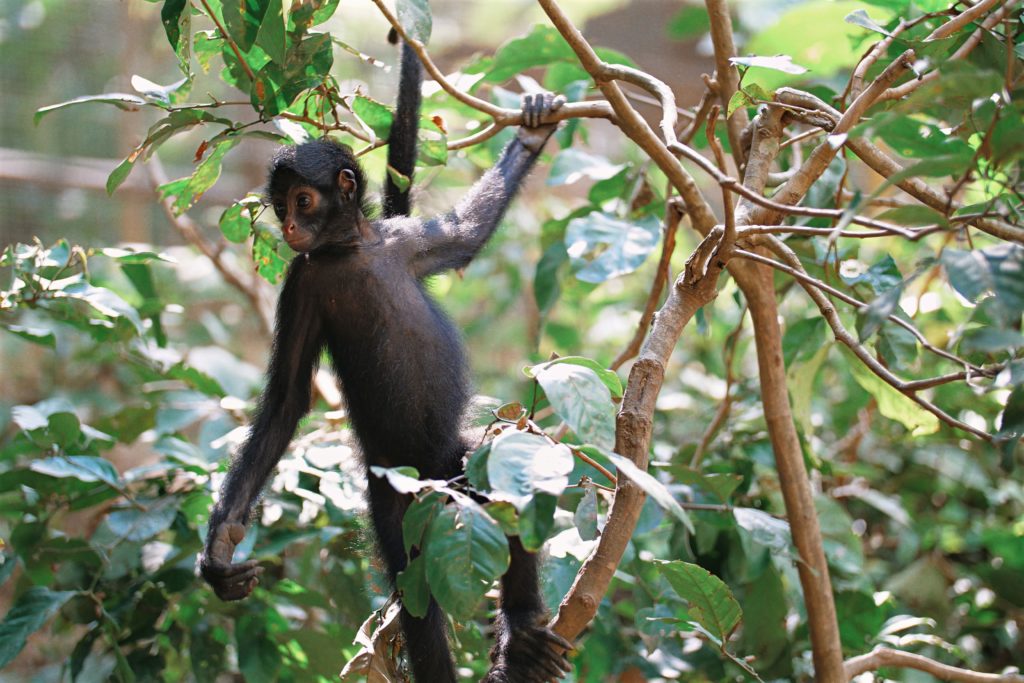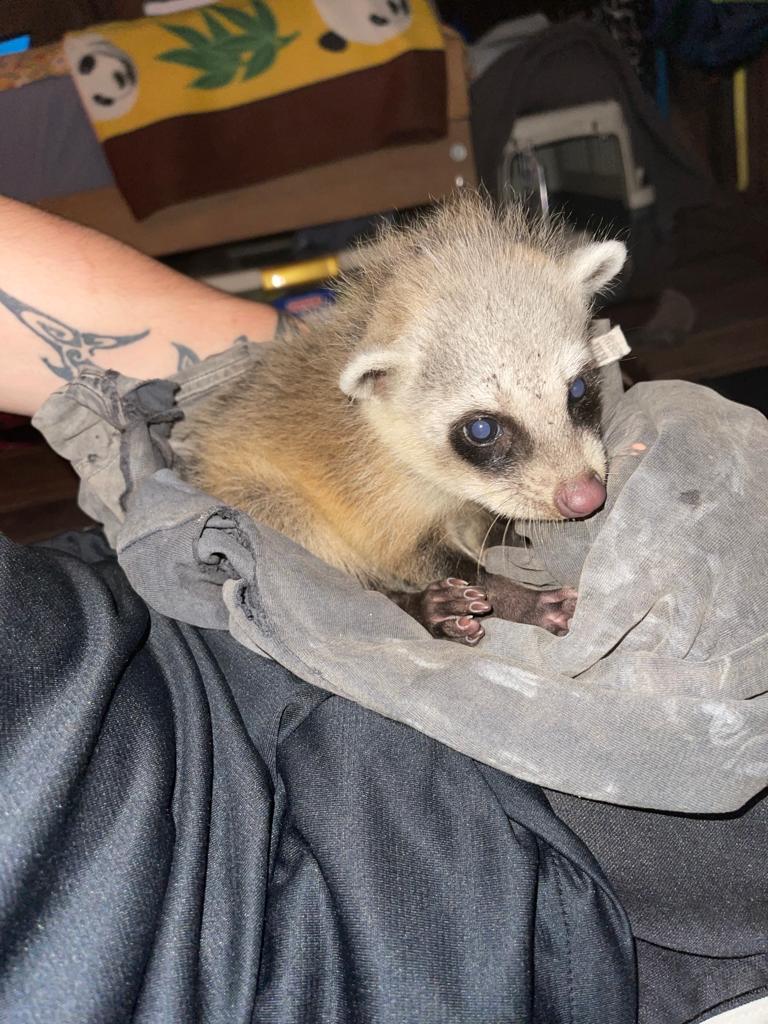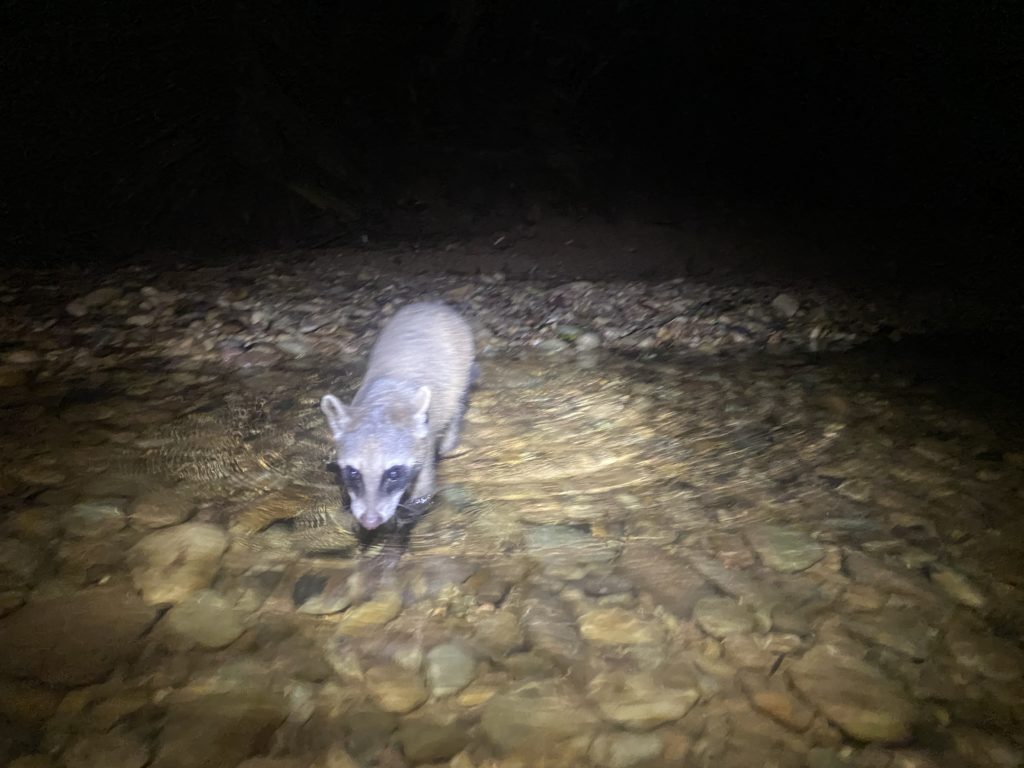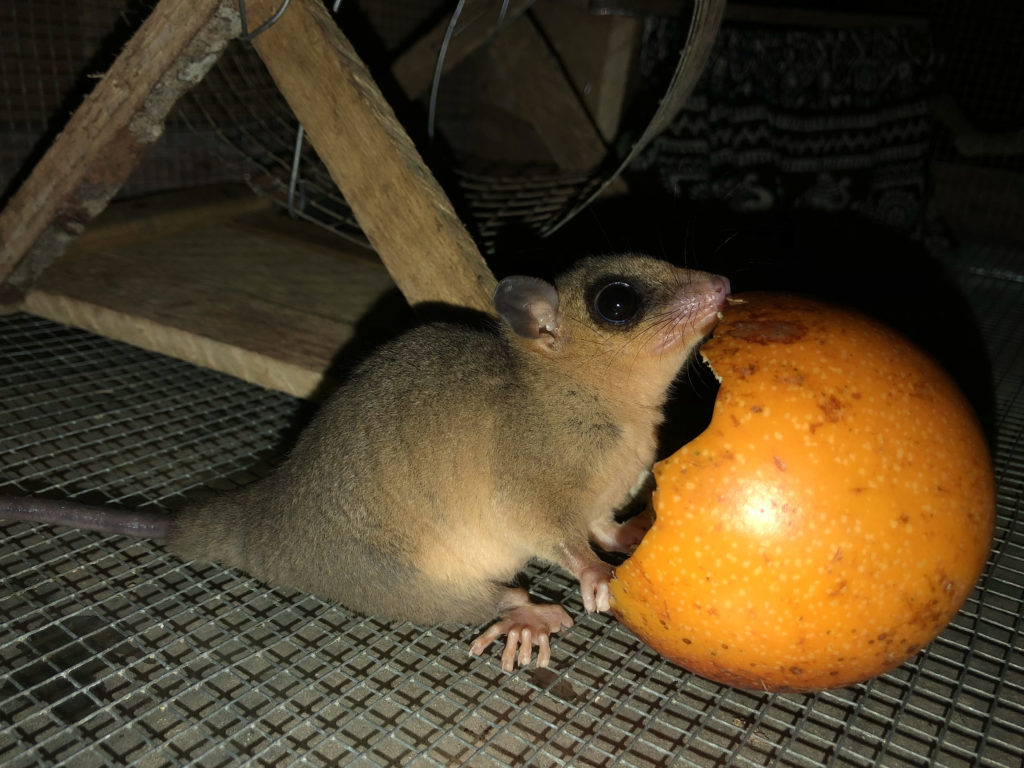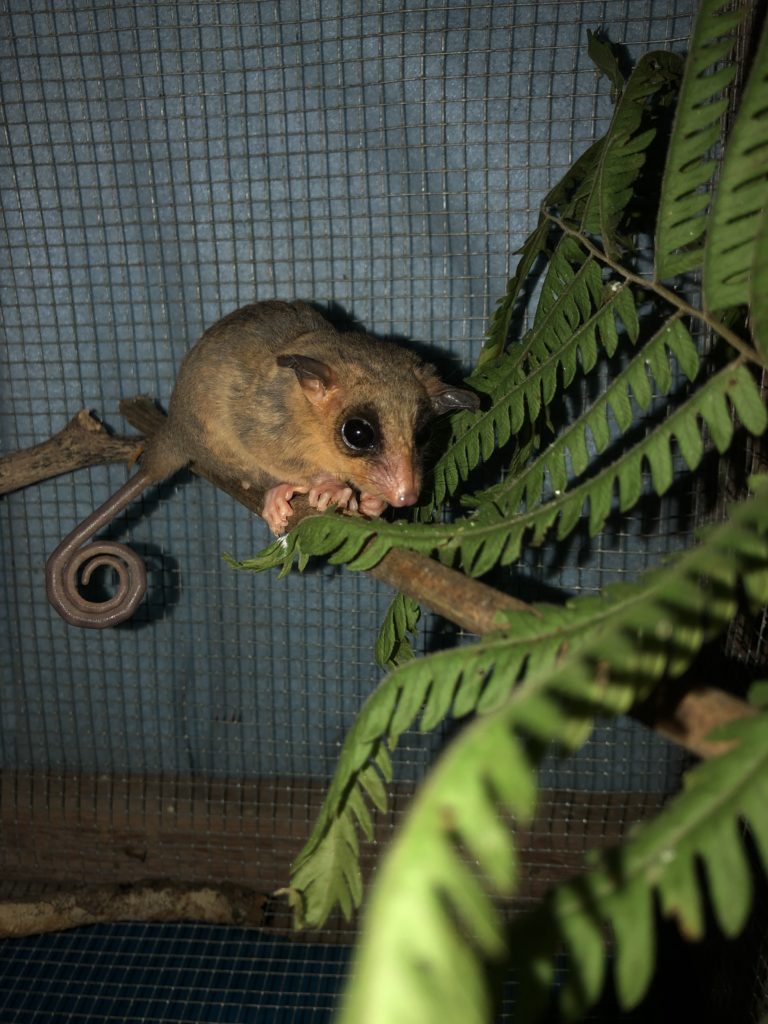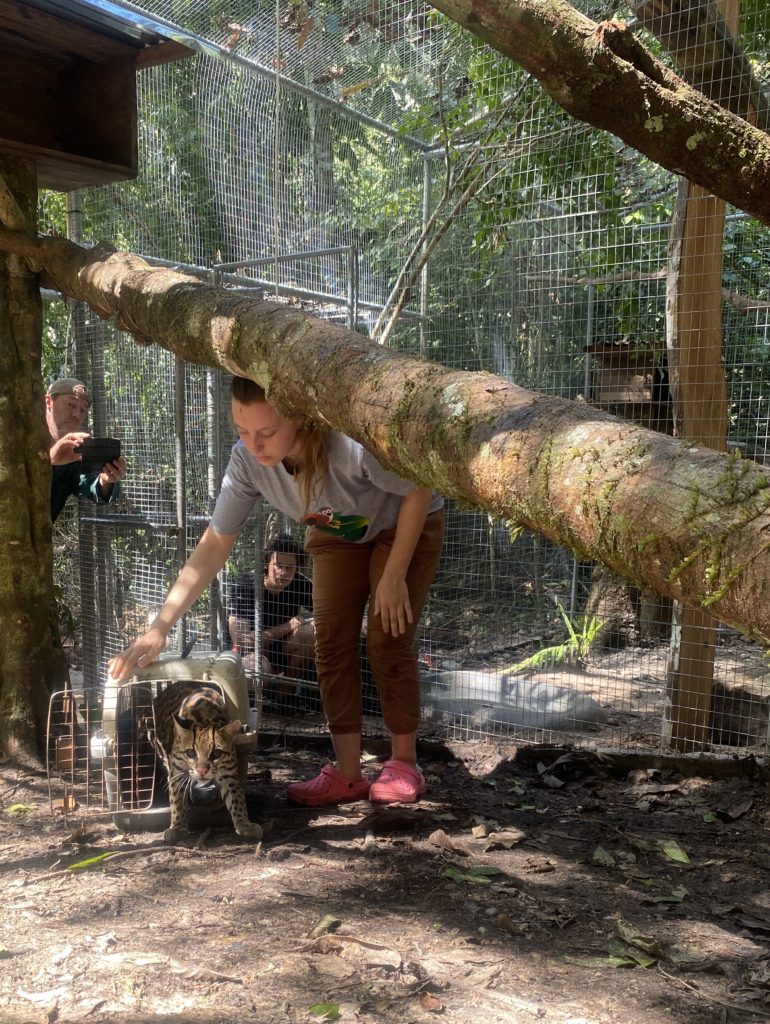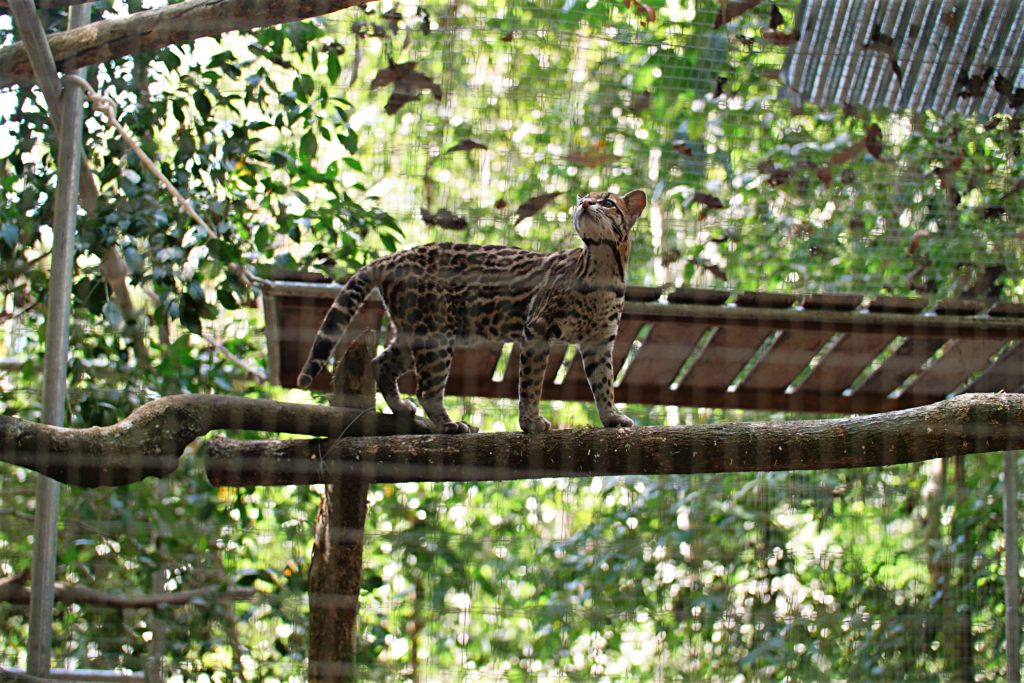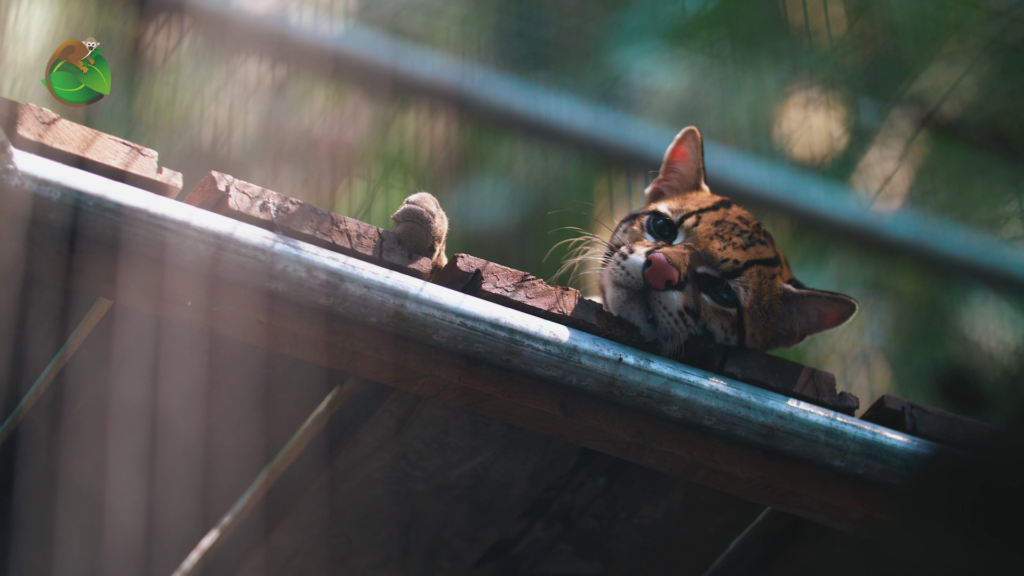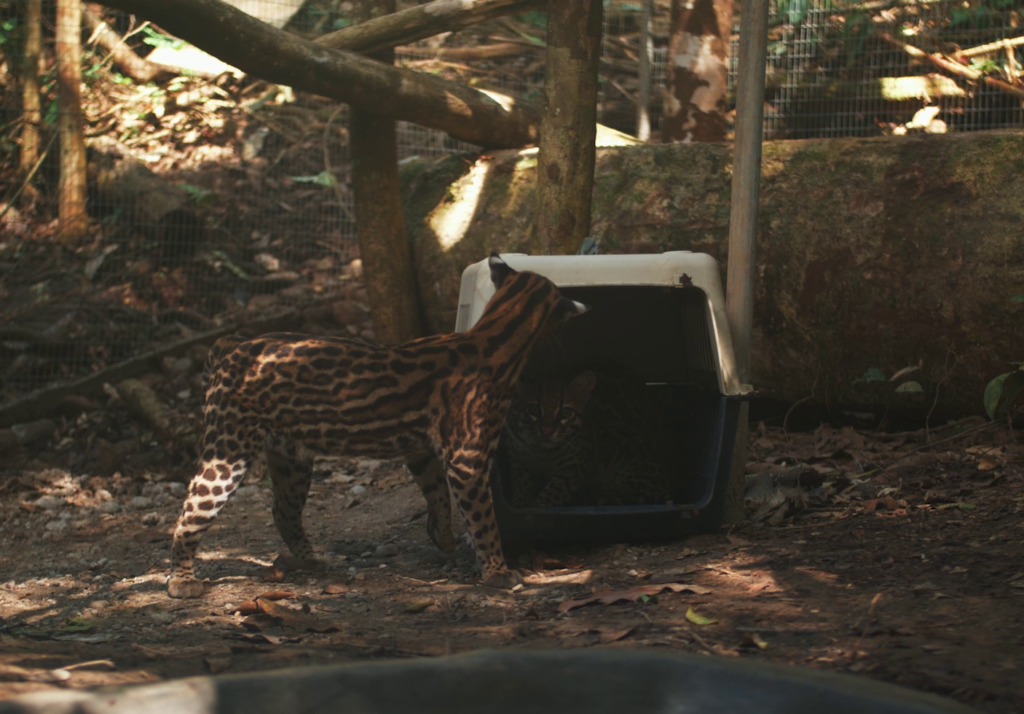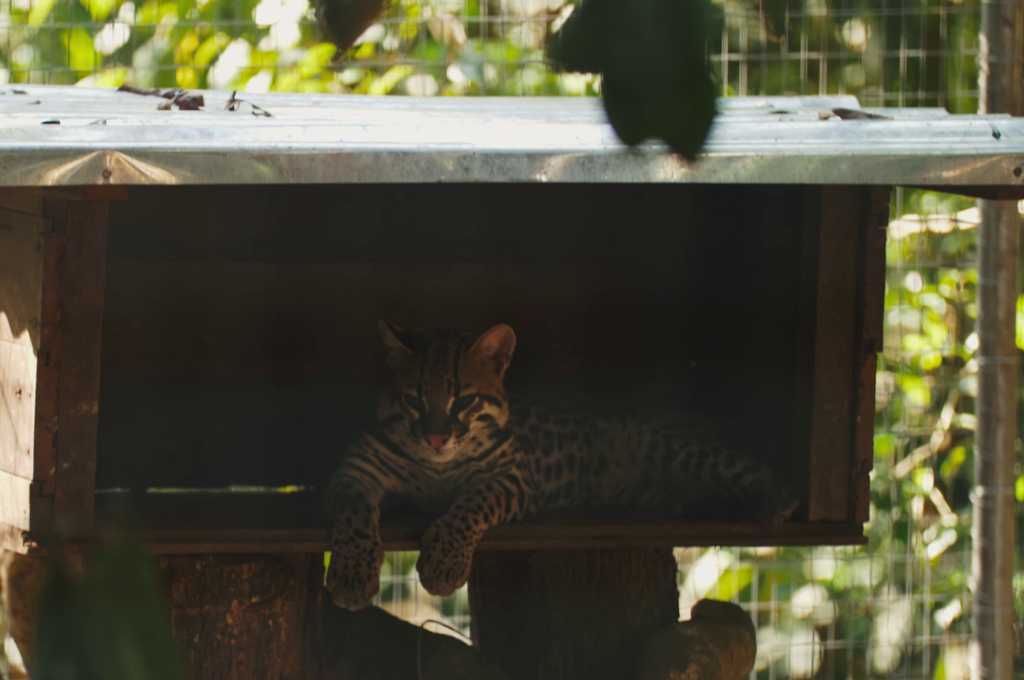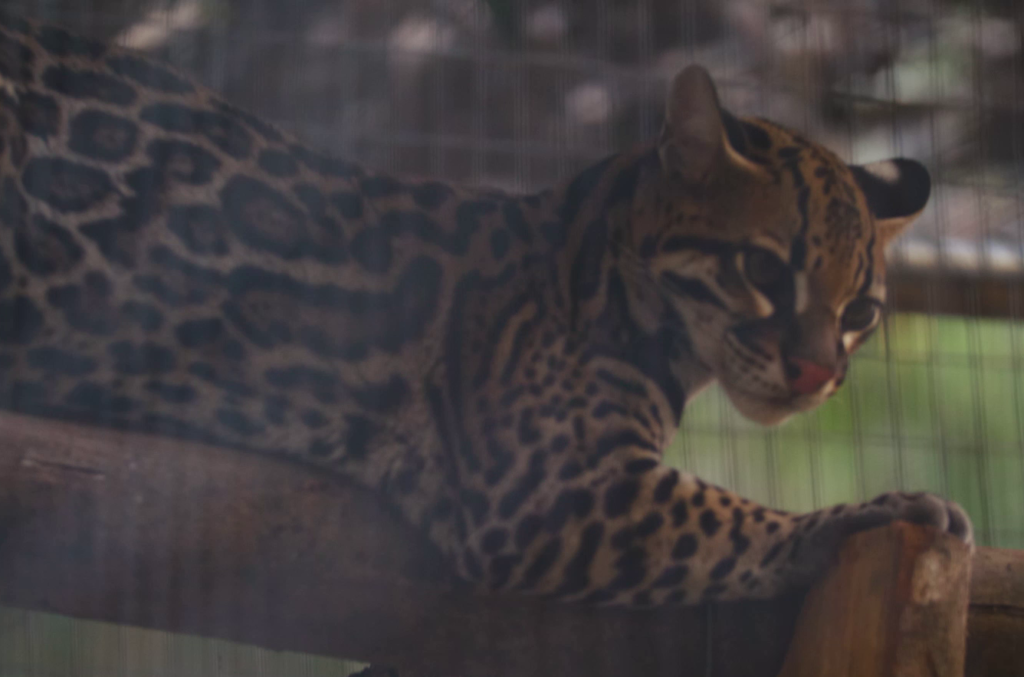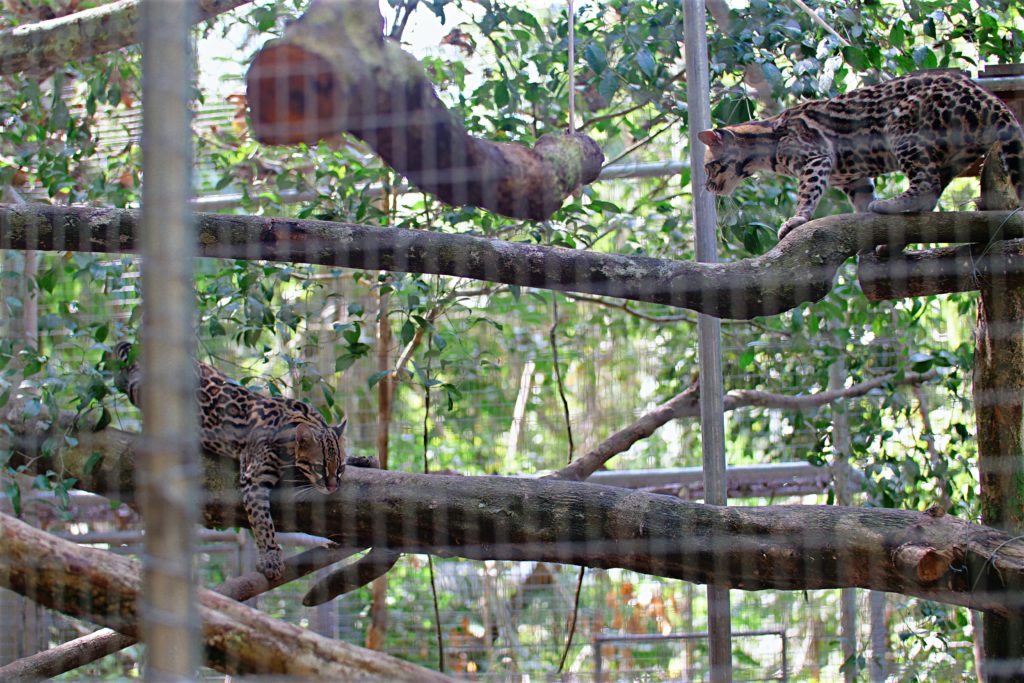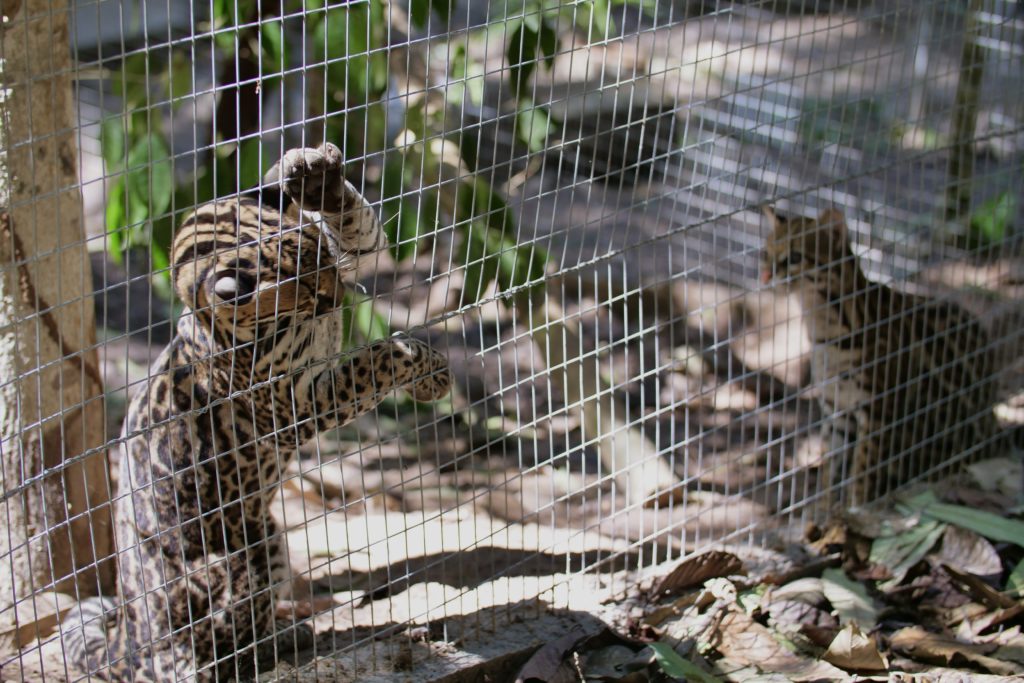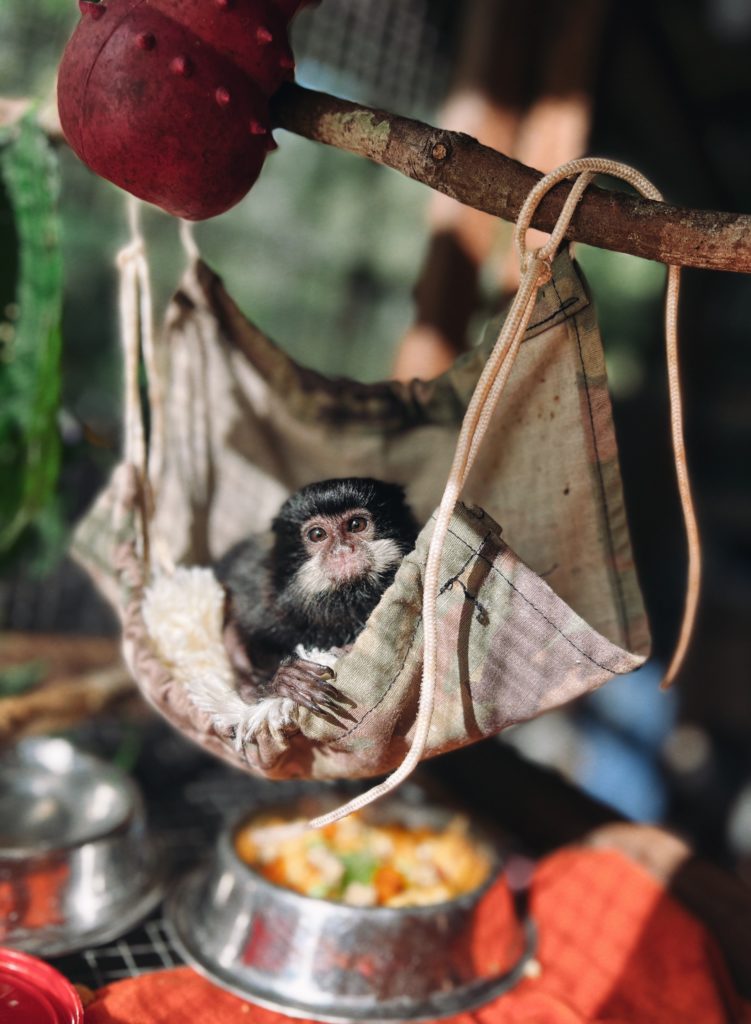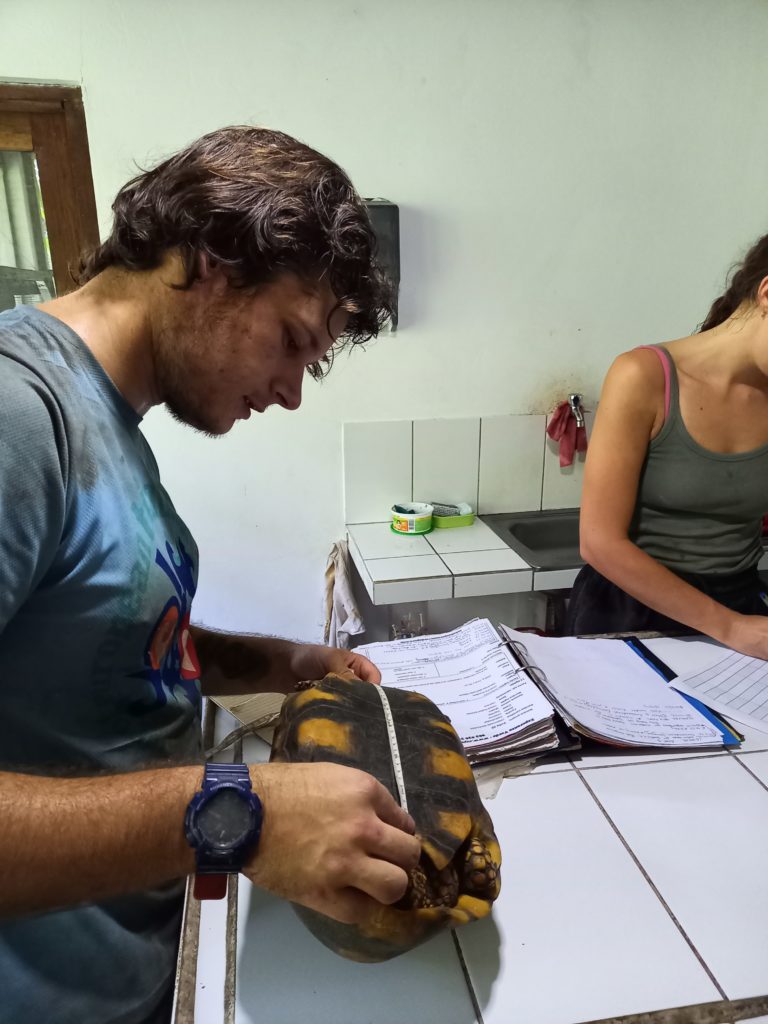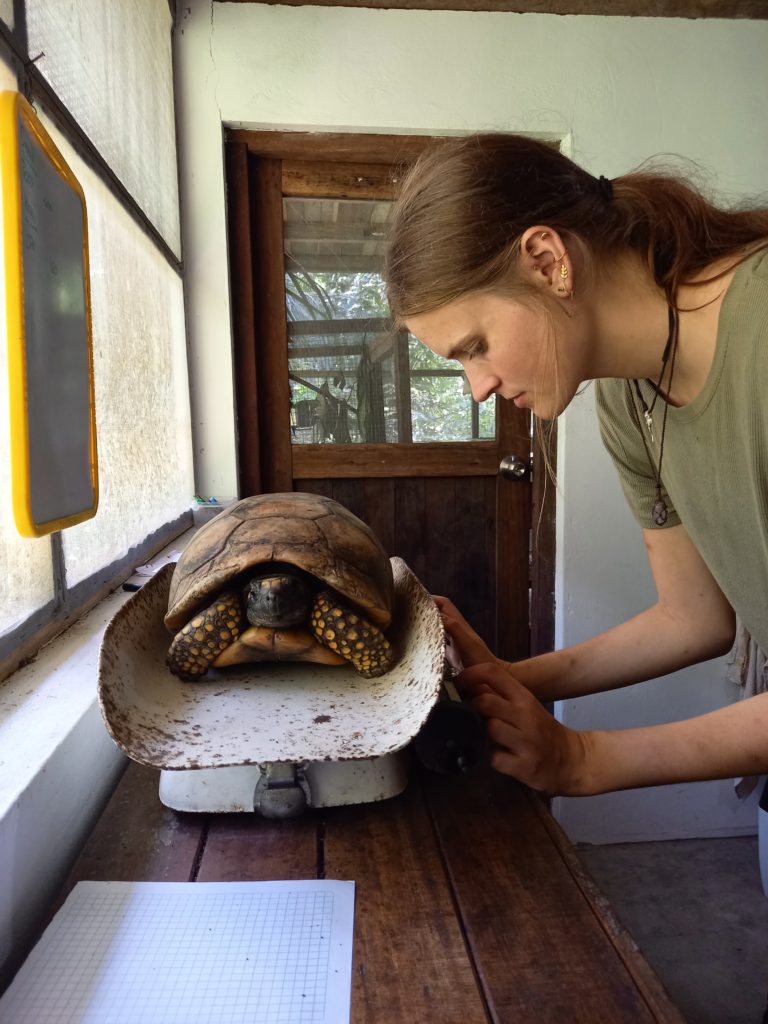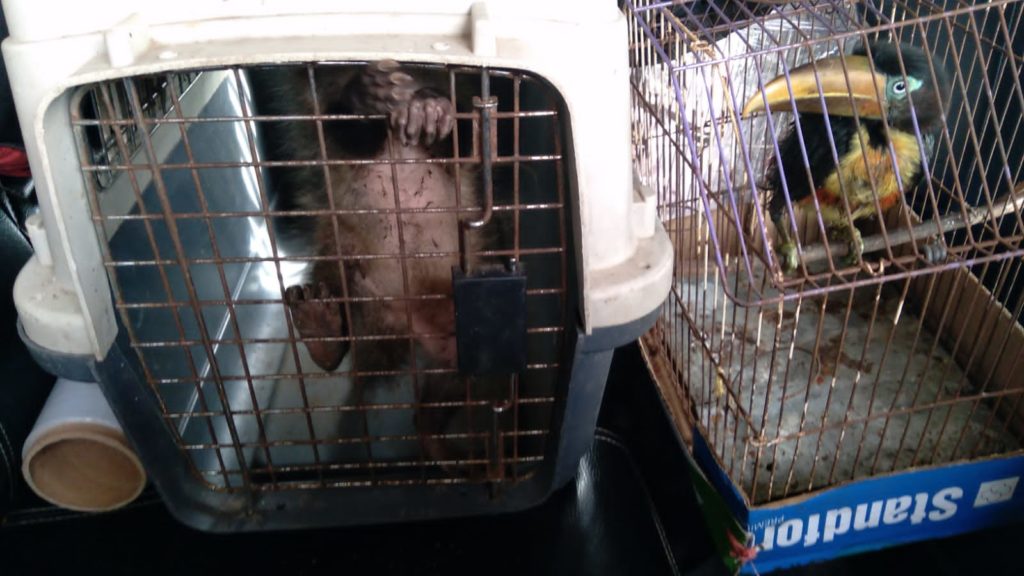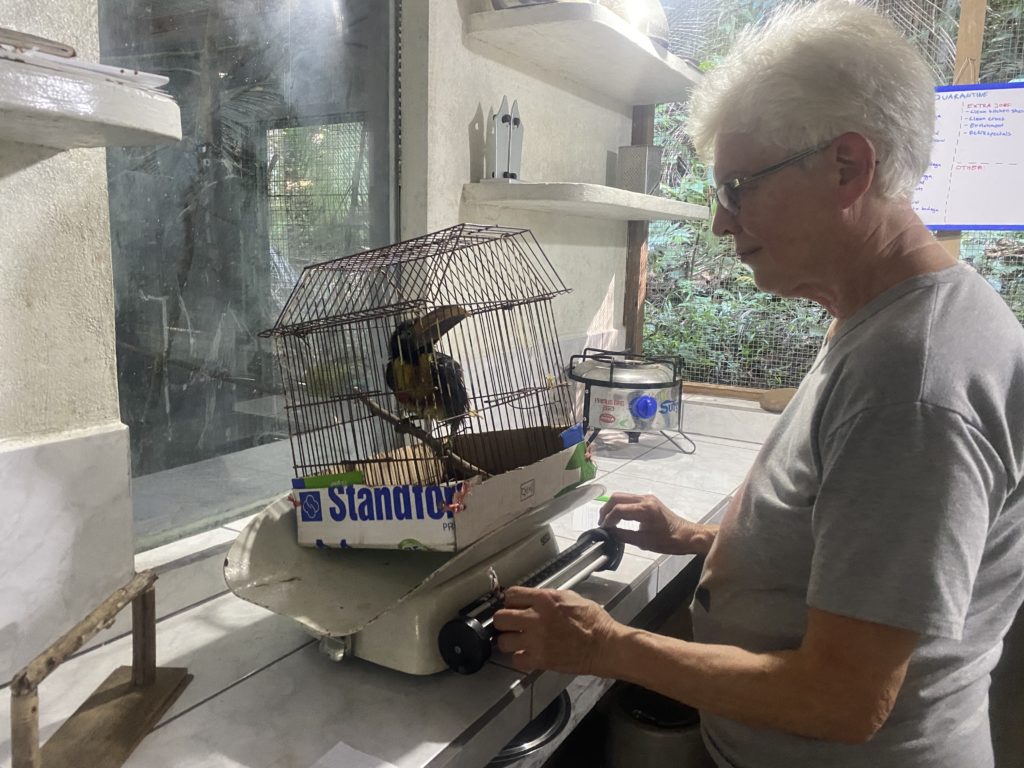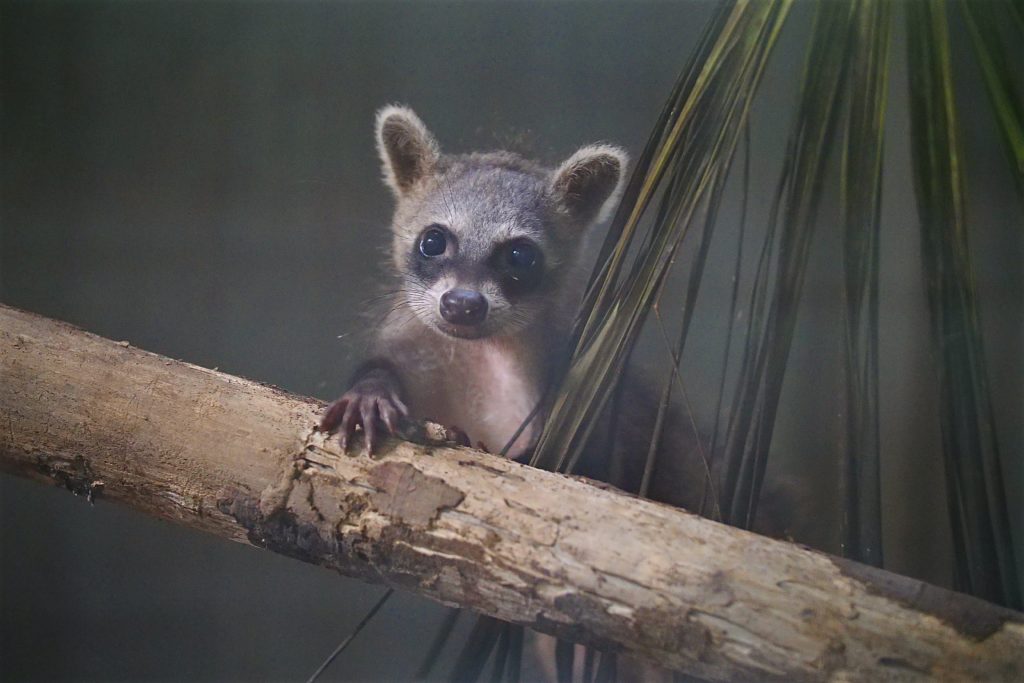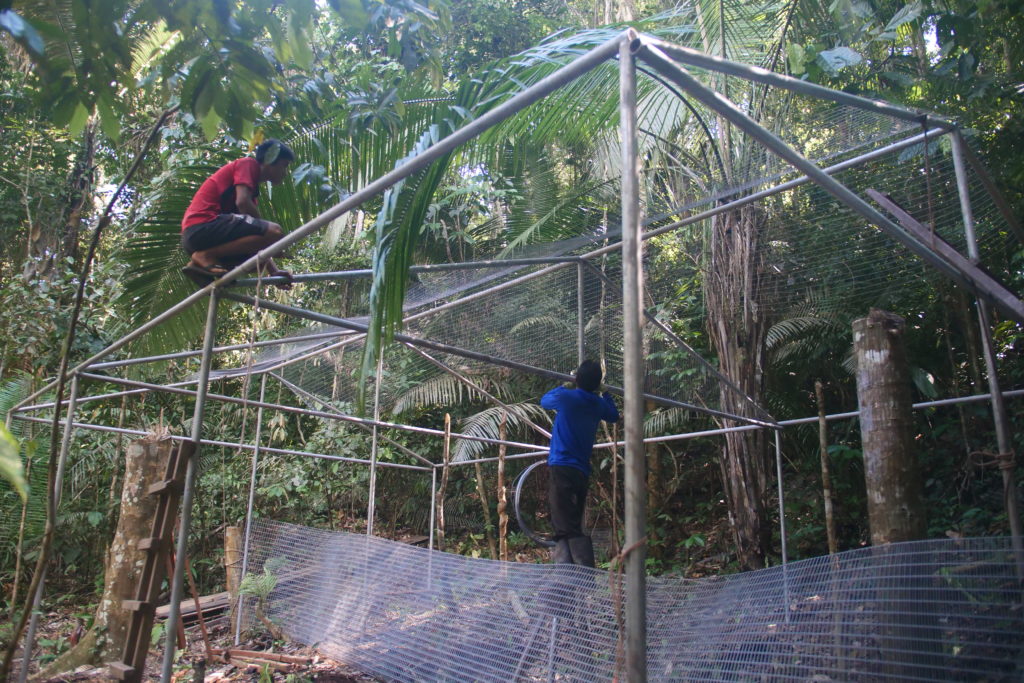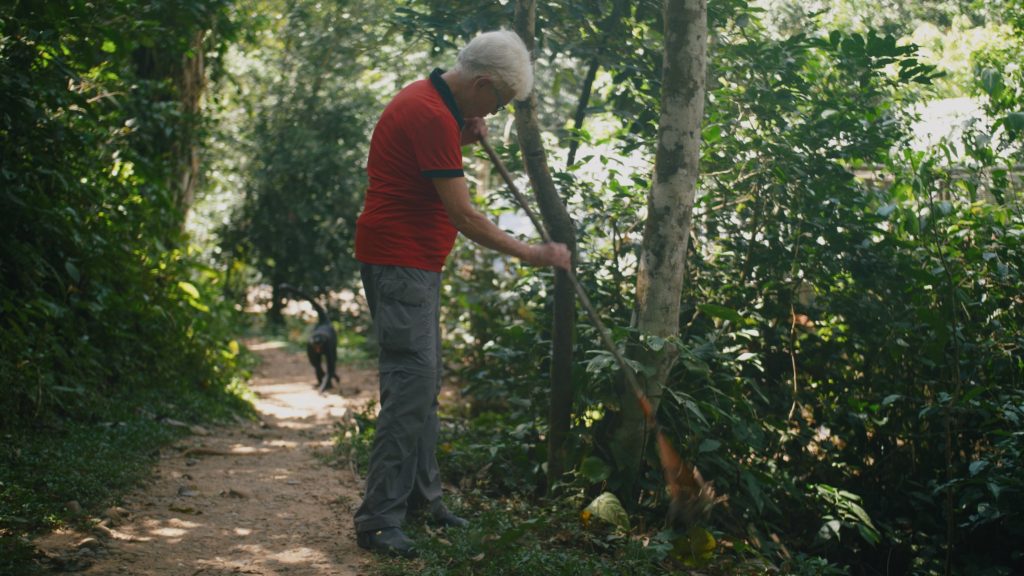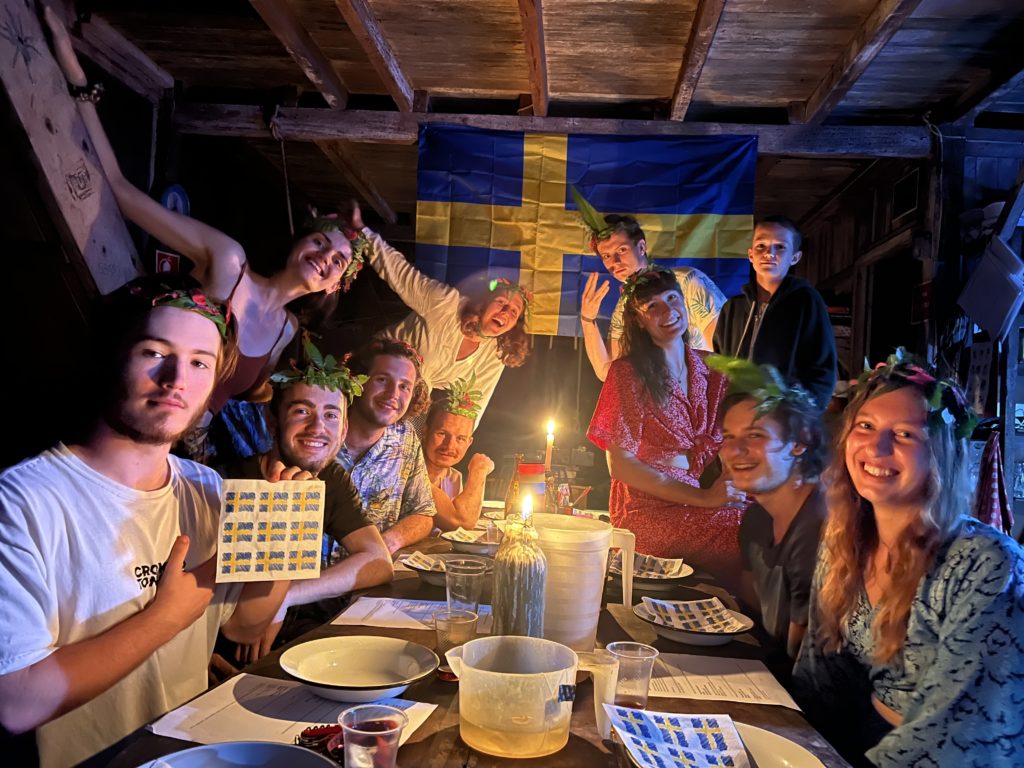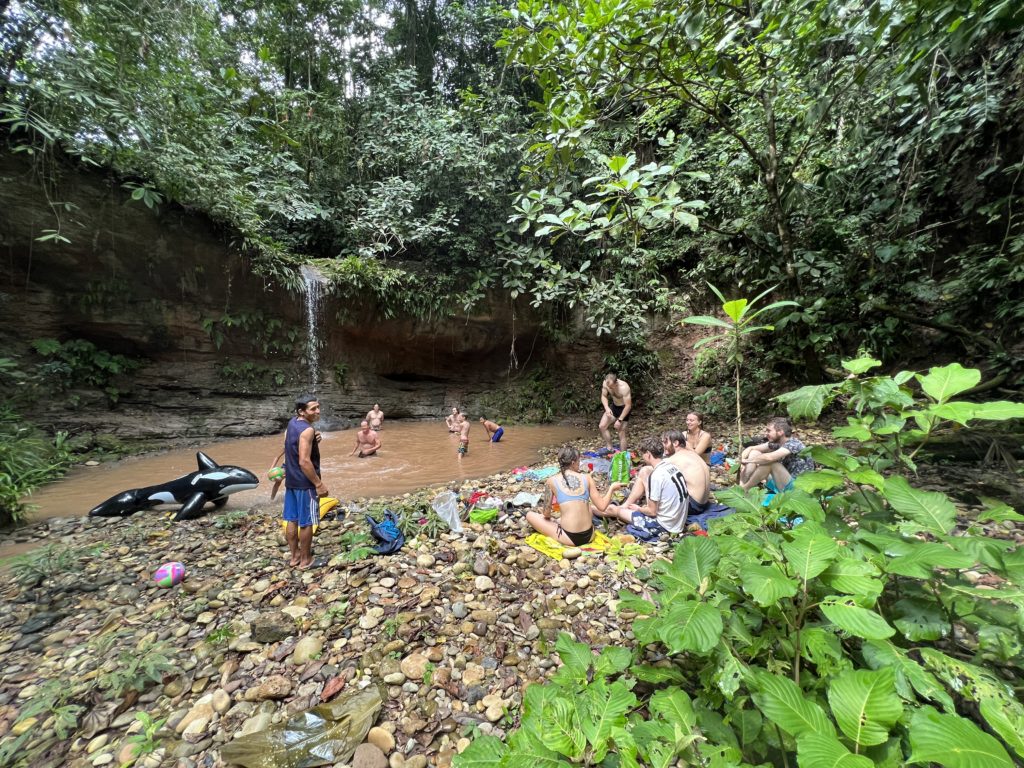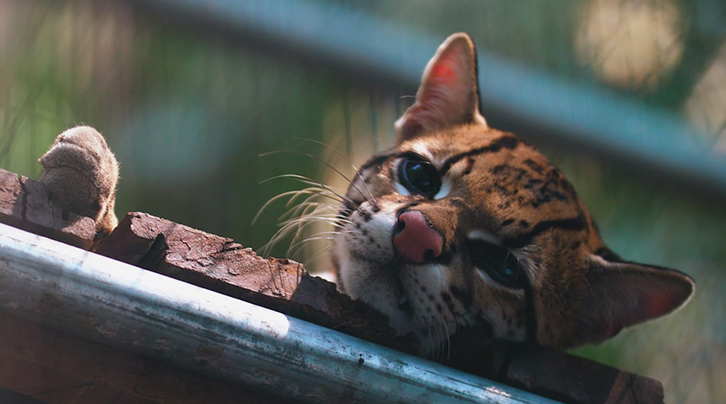
June 2022 Newsletter
Another action-packed month here at EV, with the year just flying by! With new animals and lots of new volunteers, we’re gearing up for a great dry season. There were some fantastic wildlife sightings; An adult two-toed sloth appeared near the houses one night, a good reason to wake everyone up to have a look! Another spotting was a beautiful rainbow boa as it crossed one of our paths.
This shortened newsletter comes to you with a novelty: a “read more” button to find out more, if you wish, in certain sections!
 Animals
Animals
Ashuke, Miyo and Alessi, the young male black spider monkeys are now going out to explore the (sometimes scary) outside world. They’ve gained more confidence and are travelling further from their enclosure, often for several hours a day, and starting to have more interaction with the other monkeys.
Lots of volunteers will remember Takido (juvenile male crab eating racoon) from their stay here. Sadly, he passed away this month, after having disappeared on one of his evening walks. We will miss him and the nice walks we had while exploring the surroundings.
Rasta, the mouse opossum, who was found abandoned in the attic of the volunteer house a few months ago, has been doing extremely well, now weighing almost 10 times his original weight (start was 6 grams), and is in continuous care in the volunteer house. He has a spacious enclosure and seems to be very pleased with all the attention and enrichment he is receiving.
At long last, Gaia and Wayra, the two juvenile female ocelots moved into their new enclosure thanks to the Susy Utzinger Foundation in Switzerland, who financed this project as well as the upcoming new enclosure for the two margays. A big thank you to the Susy Utzinger Association for your help financing this project and to Douwe and the construction team for all your hard work!
[read more]Alessi is doing very well, frequently playing with juvenile female spider monkey Ricuna amongst the foliage around his enclosure. Miyo is very different. He is very confident in his enclosure, yet he seems to become more timid outside when a big monkey is close. He then runs and cries. All and all not so strange; imagine being taken from your mum and then thrown roughly into the world of illegal traffic. They have now finally found a safe haven in Esperanza Verde, but it will take some time to regain their trust and adjust. Spider monkeys would normally spend at least 3 years in a close relationship with their mother, learning the essential skills to become independent.so you can imagine these three are a bit traumatized and need a lot of time to adjust and trust.
After arriving in July 2021 Takido received intensive care from Assistant Manager Alex until he was able to move into an outside enclosure. He grew steadily and learned to climb and eat fish and snails. To assist his release process, we took Takido on ‘night walks’ along the river, where he would occasionally spend the night outside before returning the following evening. Unfortunately, after one of these occasions, some local children discovered Takido near to the river with significant injuries, that he was unable to overcome.
More frequent than not animals that have been hand-reared from so young have a very low chance of survival if released. Rasta is one of those, as he has had no mother to teach him the ropes of living in the wild (although the mother already chose a human area being the volunteer house!). Mouse opossums in the wild live about a year, so we decided to give Rasta a permanent home at the volunteer house. He is much loved by all the volunteers and receives a lot of exciting enrichment, making his life as fulfilled as possible. And he has also proved himself to be an excellent insect hunter.
Bringing Gaia and Wayra together has been a long and slow process and thanks to all the hard work and patience of dedicated volunteers, research, and advice of cat behaviour specialists from different countries, it has paid off. At feeding time, they are still separated but for the rest they now spend day and night together in the new enclosure, together. Douwe, Geiler and the other helpers did a great job on the construction and as well on the interior, it really looks beautiful. Wayra and Gaia are showing their appreciation while they explore the new surroundings with the new smells, trunks, branches, sleeping boxes etc. It is beautiful to see how they, after their initial awareness of the new surrounding and smells, run and jump around on the branches. Gaia especially is loving the extra space and spends her whole day running, jumping and climbing amongst the branches and platforms!
[/read] SUST Animal Orphan Hospital
SUST Animal Orphan Hospital
All is relatively quiet in the SUSTOAH, with some birds in treatment, and Otis (male nightmonkey) still being under observation, allowing extra time for checkups.
The new baby tamarin Sipra was moved directly to the clinic. She is very young and needs a more intensive 24 hour care. Quickly she has become the highlight of the SUSTOAH.
[read more]Sipra seems to be really enjoying her enclosure, which is full of new and exciting things to play with. Her favourite spot is a tiny hammock, where she takes her post-lunch nap basking in the afternoon sun. On arrival, seemingly from the result of neglective care, the end of her tail showed signs of necrosis and she’s receiving ongoing treatment in the SUSTOAH to manage her condition.
The eight tortoises that have been spending the last weeks of their quarantine time in the Momo enclosure were all taken to the clinic for a medical check, they were measured, weighed, and given deparasitation medication and after a follow up will be ready to move to a more permanent enclosure.
[/read] Quarantine
Quarantine
This month we had three new arrivals from the Ministry of Flora and Fauna, a chestnut-eared aracari, named Eros, a young female crab eating raccoon, named Chela, and a very young female tamarin monkey, now named Sipra. All were confiscated from the illegal trade in animals.
[read more]Eros (chestnut eared aracari) is very tame and his wings were cut extremely short; a method commonly used to prevent pet birds, who have been captured from the wild, from escaping. He was named after the Greek god of love, which we hope will play in his favor when we eventually introduce him to Amora (already resident chestnut eared aracari)
Chela, the crab eating raccoon is estimated to be around 2 months old. She seems to have settled in nicely, enjoying all the enrichment in her enclosure, especially the small addition of a pond. Although very young and some contact is necessary we hope to keep it at a minimum, giving her the best chance to have a successful release back into the wild.
[/read] Construction
Construction
All focus is now on finalizing the new margay enclosure for Grety and Diego (female and male margay), the second part of the project financed through crowdfunding set up by the Susy Utzinger Foundation. While the construction team is tied up, we are very happy to have some handy volunteers who can take up maintenance jobs, like fixing mesh of enclosures, renewing steps, building up the interior of small enclosures etc.
 Volunteer life
Volunteer life
We were lucky enough to welcome back our good friend and returning volunteer Theres, from Switzerland, and as always, she finds enough jobs that need to be taken cared off.
There was lots of cause for celebration this month, celebrating the local tradition San Juan, having lunch at the waterfall. It is always fun to have so many different cultures together here, as it gives us the opportunity to learn other traditions as well. This time it was the celebration of Midsummer, a Swedish tradition, with a delicious dinner for all.
[read more]Theres had met Douwe and Olivia during their time working in amaZOOnico, a rescue centre in the Amazon of Ecuador. She always is a tremendous help, assisting in the bodega, helping with the tours, a lot of cleaning jobs and doing her favourite job: raking paths (which is especially important during dry season as snakes can hide beneath leaf piles, unbeknownst to us). We send a big thank you to Theres for joining us once again and hope that she will visit again next year.
The local tradition ‘San Juan’ celebrates Saint John the Baptist, patron saint of the Amazon and of all its waterways. As part of the tradition lunch is packed in a leaf package, called Juanes. We had our lunch at the waterfall and took some nice relaxing moments in the water and sun before heading back to take of the animals!
And thanks to Assistant Manager Alex, we also celebrated ‘Midsummer’, with a delicious dinner of cheese pie, meatballs and finished off with apple crumble, all whilst wearing homemade ‘flower crowns’, to help us celebrate in style.
[/read]
